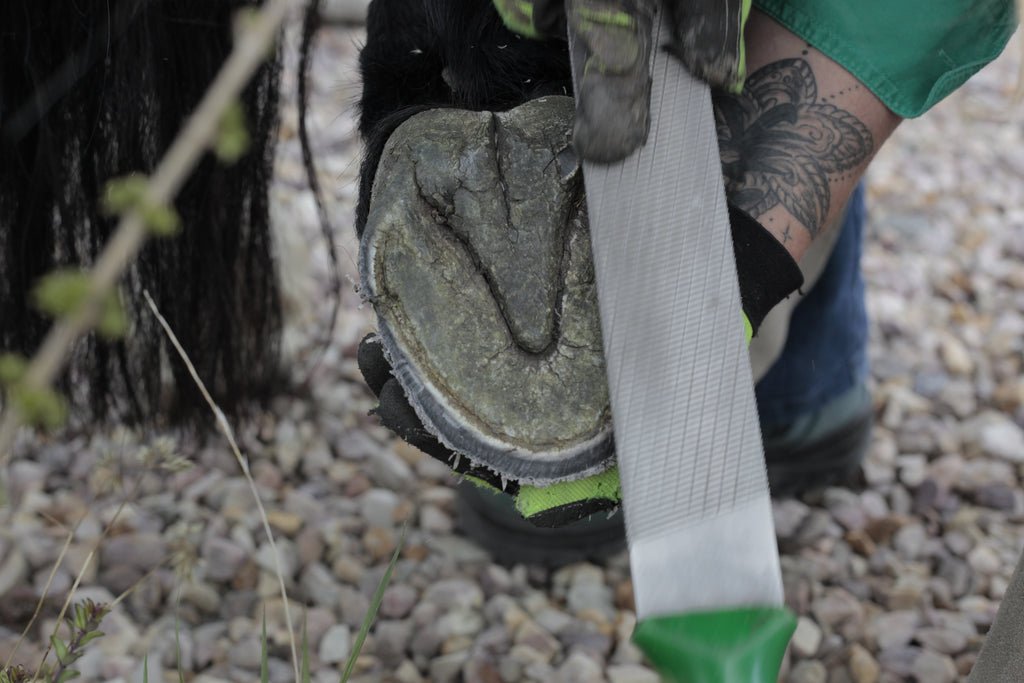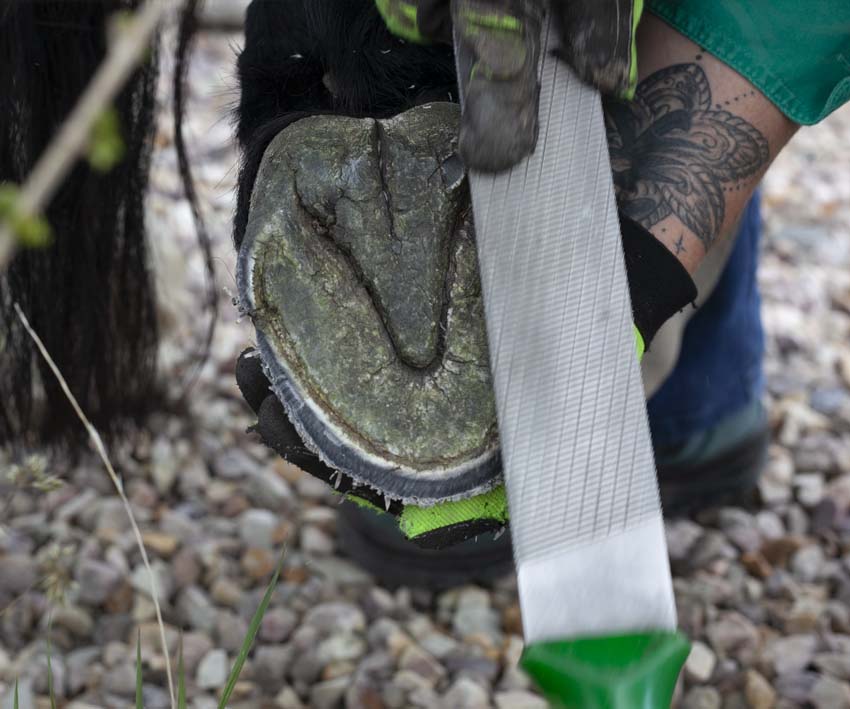
Quarantine Maintenance Trim
Share
My Barefoot Trimmer can't Come to my Place at the Moment, How Do I Keep up with the Maintenance of my Horse's Hooves?
All is well here in Connecticut, USA, but I know that many of you are unable to get their hoof care providers out to their farms during this global crisis.
So, what is one to do?
Horses don't know there's a health crisis going on, and their hooves are not going to stop growing!
They're just going to keep on growing, and growing, and growing...
Horses that don't have access to wide, open spaces with hard ground to move miles a day on, will be unable to wear their hooves according to their growth and movement, therefore they must have their hooves barefoot trimmed on a regular basis.
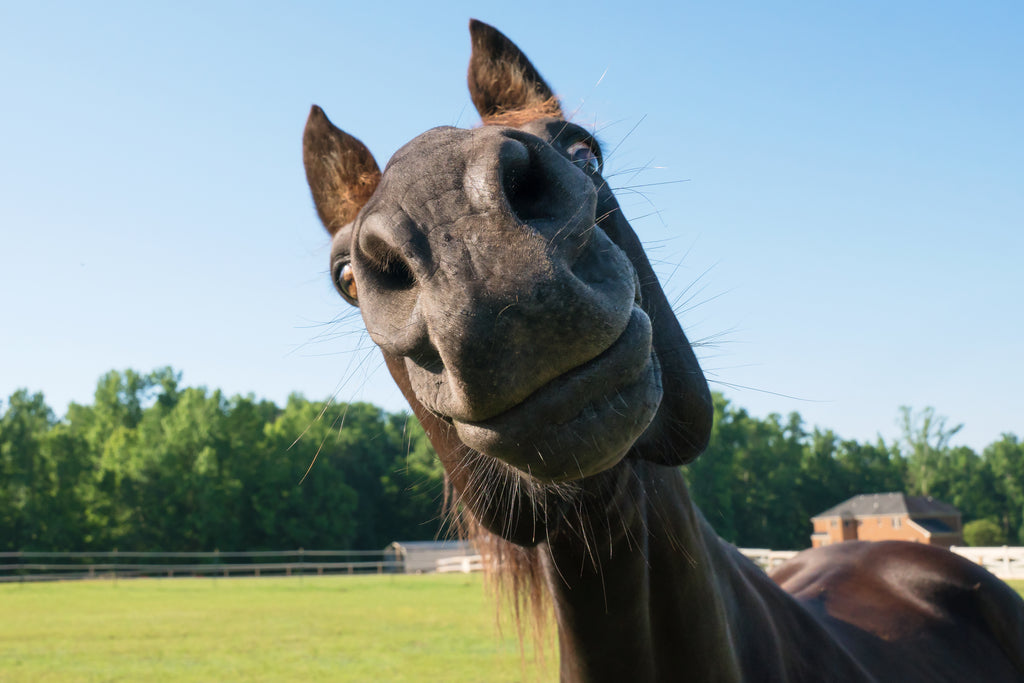
So... what can the average horse owner do in such an unprecedented time?
There is an easy way to at least keep your horse's toes back, which is the most important part of barefoot trimming for the overall good health of the horse's hoof.
I'm going to lay it out here in pretty simple terms, please note that this is not to be the be-all, end-all to having your own hoof-care provider tend to your horses' hooves every few weeks! However, it is a way that you can keep on top of the growth of your horse's hooves, and hopefully keep the hooves in check until you can get your own barefoot trimmer or farrier back in your barn.
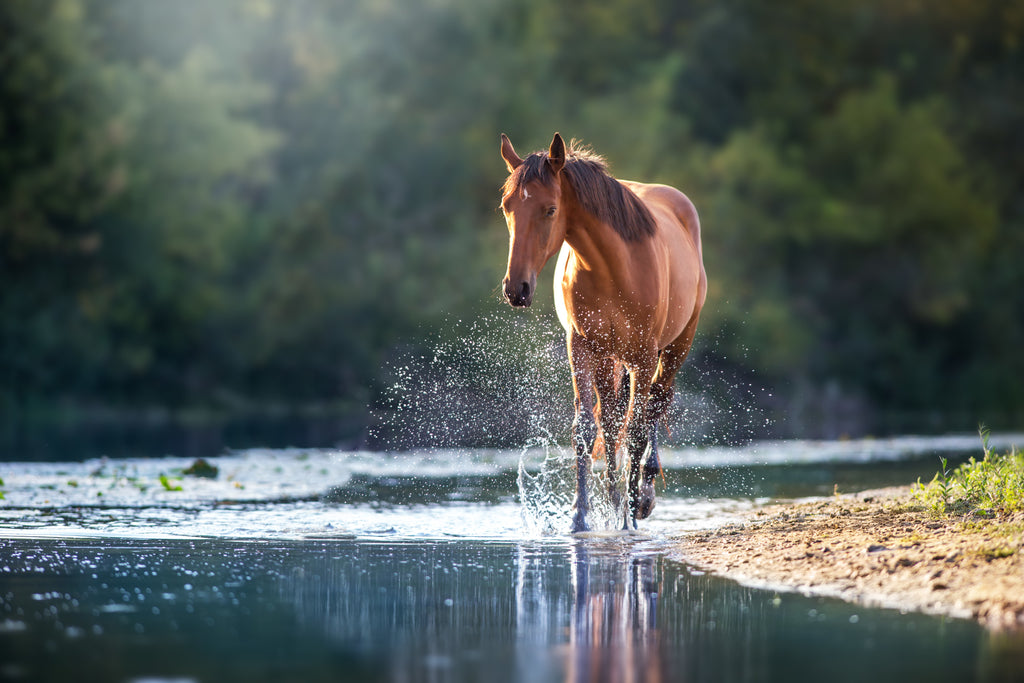
CAUTION: It is wise to get a pair of heavy duty boots and leather gloves for body protection. You'll also want to wear a sturdy pair of jeans or other long pants.
It goes without saying that you'll need a rasp, a good, sharp rasp. Rusty, dull rasps are totally ineffective and those who are not used to trimming hooves will not be able to do much but take tiny shavings off the hooves.

How to Trim your Horse's Hooves:
1. Clean your horse's hooves thoroughly! You have to be able to see just what is going on in the hoof, and you need to be able to see the hoof's white line. If you don't know what the white line is, here is an instructional illustration of the parts of a horse's hoof. The 10 o'clock point across the toe of the hoof to the 2 o'clock position is not labelled, this is the tow callus area;
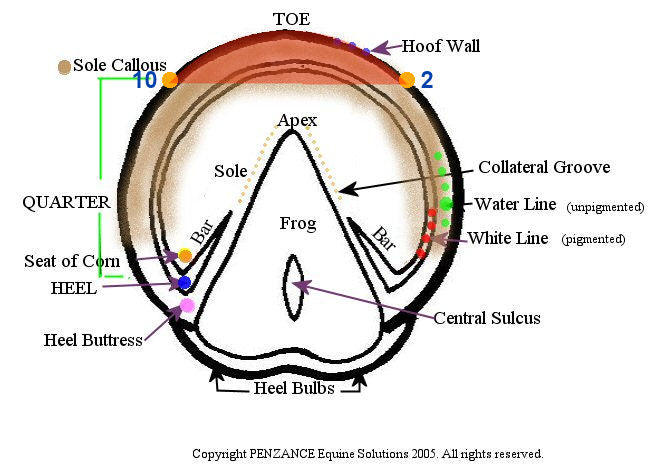
2. If you don't have a hoof stand, there are a number of different things you can do to get your horse's hoof up so you can access their toe:
a) Have your horse put his hoof up on your knee as depicted below, but without the stand.
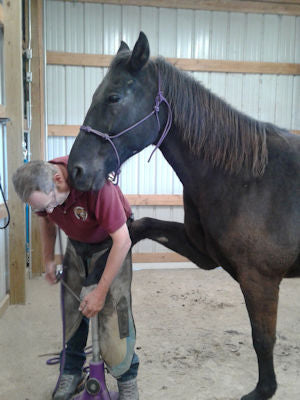
Photo courtesy of American Farrier Journal
b) Use a block of wood, or a sturdy stump, and have your horse place its foot on the wooden block with their toe hanging over the edge of the wood.
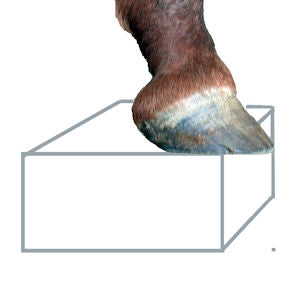
d) Hold the hoof in one hand while rasping with the other hand (I don't generally do this except with ponies and minis, standard sized horses are too much in the hand when trying to trim in this manner).
3. Now that you have the horse and hoof situated, take your sharp rasp and rasp down against the hoof wall at a 90 degree angle. Make sure that your rasp is forming a 'T' shape with the hoof wall, otherwise you'll be rasping the top of the hoof wall and we don't want that. We want to rasp the toe back.


See the difference in the angle? You want a 90* angle of the rasp to the angle of the hoof wall!
4. Rasp only in the centre of the toe to being with. Once you hit a fair amount of laminae that is sticking to the hoof and looking like shredded Parmesan cheese, stop rasping! Do not rasp any further.
The picture above is showing the shaggy edge of the hoof, where the laminae has been rasped back enough.
5. Once you've completed the front of the toe, continue on around the hoof, from heel to heel, in the same fashion. Use the coronary band as a guide for shaping the hoof, you want the hoof to be pretty much the same shape and width all around the hoof.
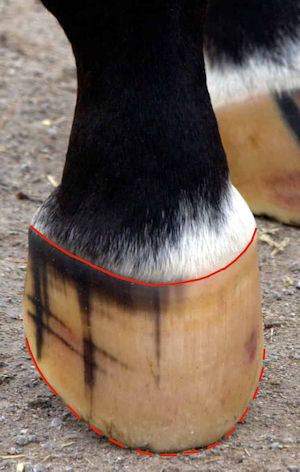
6. Once you have finished this, then simply take the finer side of the rasp and go around the edge of the hoof wall to lightly 'clean the hoof up' and that's it!
If your horse's hooves have been well maintained, then that's all that should be necessary. The hooves *should* be in pretty good balance and the heels shouldn't be too high. So leave them alone.
If you feel confident and have some background experience in barefoot trimming, you can, at this point, after the toes are done, rasp a 45* angle to the hoof wall from the sole side of the hoof, beginning at the distal edge of the white line, and out to the distal edge of the hoof wall. Then, smooth the outer edge of the hoof wall with the finer edge of the rasp.
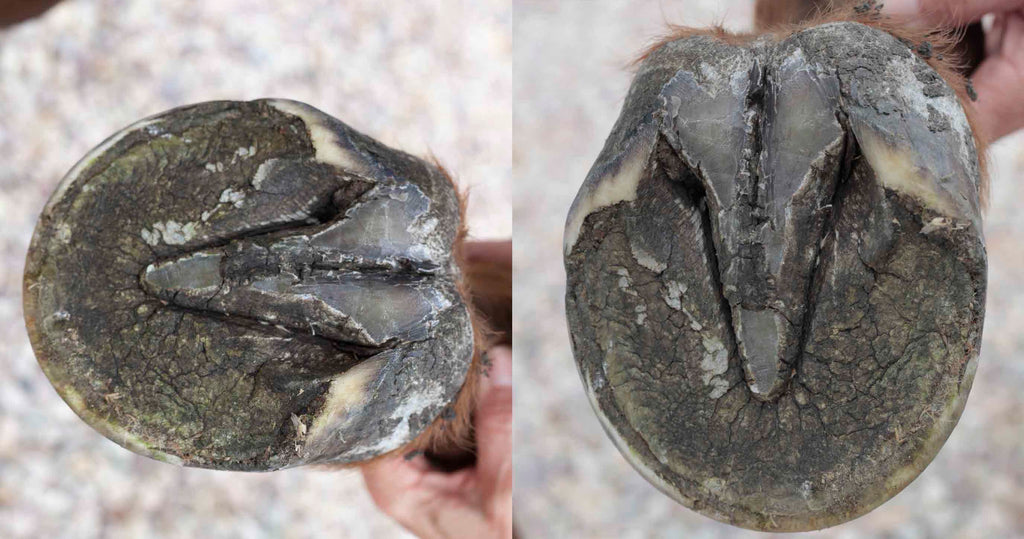
Again, this is not to replace your regular barefoot trimmer, or farrier's service. This is only to help keep the your horse's toes from getting too long until your hoof care provider can get back to see your horse.
Doing this should help prevent any other adverse hoof situations from arising.
I would be remiss if I didn't mention that taking your horse for a 10 minute walk on a hard, tarred surface once or twice a day will help him, or her, maintain their hooves very nicely! Not to mention the time together on a leisurely walk will help to strengthen the bond between the two of you!
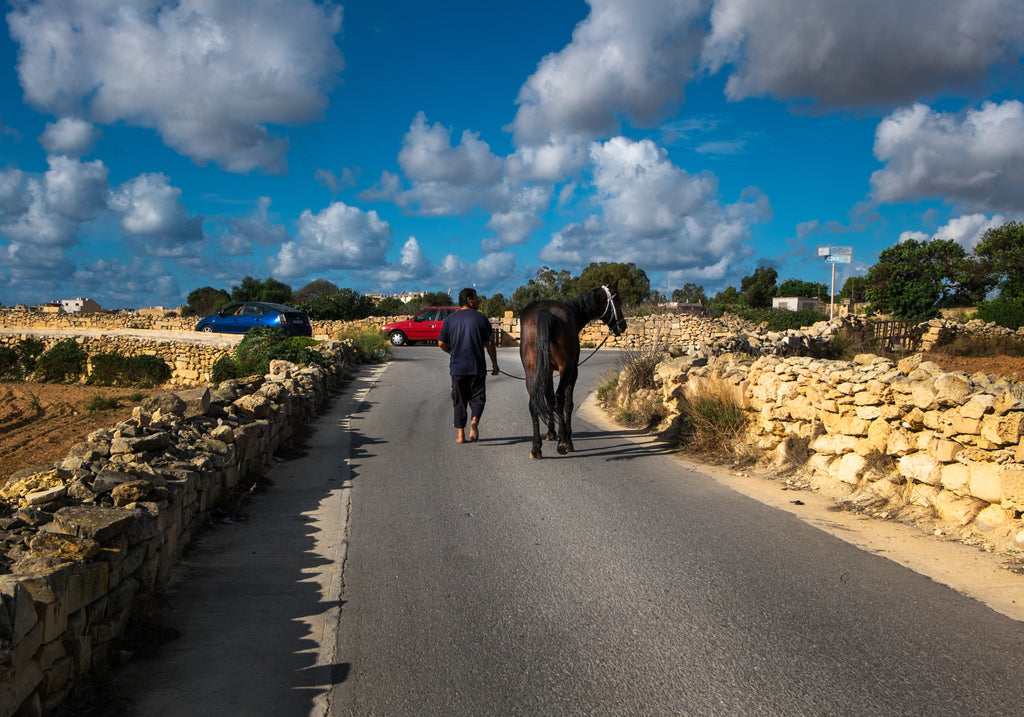
Building a Supportive Barefoot Community
The team at Scoot Boot believe passionately in the barefoot horse and strive to build a supportive community of barefoot horse lovers.
Find more information about using Scoot Boots here.

Gwen Santagate is the author of "10 Secrets to Healthy Hooves" . For the last 37+ years, she has maintained healthy hooves with natural trimming on thousands of horses and specialized in pathological rehabilitation hoofcare for the last 18 years. She keeps a small herd of her own equines and continues to offer consults for horses in need.



